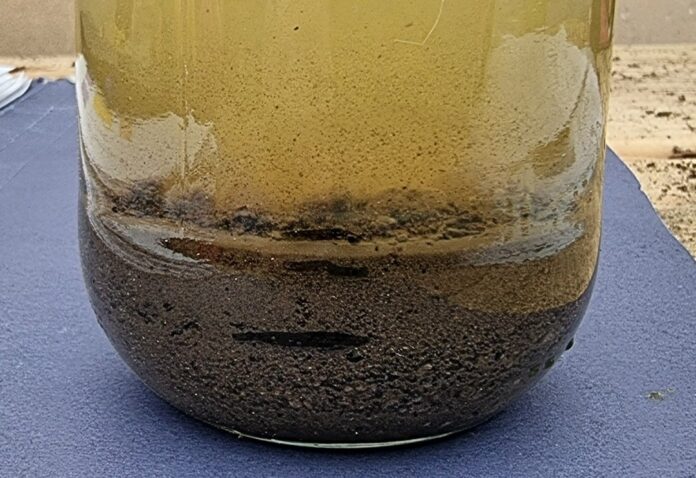How to do a Soil Texture Test
by Dee Sewell for greensideup.ie

I first published this article in November 2011, but with better cameras, and a flurry of tests being undertaken this year in various community gardens, it seemed like a good time to update it.
Why? Getting to know your soil is half way to determining how well your plants will grow.
Soil texture describes how soil feels. It can influence how plants grow as it affects water and nutrient efficiency. If you can identify your soil type, whether it’s clay, sand, peaty or loam, you can work with the soil you have and grow plants that prefer the growing conditions, rather than constantly fighting against them.
How to find out what your soil texture is
 A fun experiment you can carry out at home (and a great one for the children to help with too) is to place about a cup full of your soil (preferably) into a straight sided clean jar, removing any larger pebbles or stones first.
A fun experiment you can carry out at home (and a great one for the children to help with too) is to place about a cup full of your soil (preferably) into a straight sided clean jar, removing any larger pebbles or stones first.
Add a tablespoon of laundry detergent and a tablespoon of salt to the soil then fill the jar with water to the top before screwing on a lid tightly.
Shake the jar for five minutes or so (you may need help!) then leave the jar undisturbed where you can see it. After a couple of days the soil particles will settle into layers.
Reading the Results
As the sand particles are the heaviest they will sink to the bottom first, followed by silt then clay. The thickness of each layer will help to determine how much of each is contained in your soil.
As you can see from the results of this soil sample taken from a community garden and marked on the jar, a layer of sand has settled at the bottom, then a layer of silt, followed by a small layer of clay at the top. We have estimated that this sample is 65% sand, 30% silt and 10% clay. If you follow the lines in the soil texture chart below to cross reference, you can see that the soil sample is considered sandy loam.

Source: USDA Soil Texture Triangle
You can often identify your soil type by looking at it and feeling it, without the need for an experiment (this was just for a bit of fun). Sandy soil is lighter in colour than clay for instance and peat much darker again.
How to determine soil without the experiment
Grab a handful of dry soil and add a few drops of water, mixing well until it become pliable. Try rolling the soil into a ball.
If it feels gritty, if it crumbles when you try to roll it into a ball then your soil is sandy.
Course sand feels like granulated sugar when rubbed between fingers.
Medium sand feels like table salt when rubbed.
Fine sand is harder to detect unless you hold your fingers near your ears as you rub it.
Sandy soils are easy to dig but water and nutrients flow through them easily, meaning they dry out quickly and will have to be replenished regularly. Sandy soils warm quickly and retain their heat (just think of a warm beach) which some plants especially like, particularly carrots and their roots will swell.
If, when you try to roll the soil into a ball in your hand it holds together well, or if it feels much finer than sand, then your soil texture will be silt or clay. If it feels like plasticine then its fine clay whereas silt particles will leave it feeling like icing sugar. If you can roll the soil into a sausage and it forms a ring, its clay. If it forms a sausage but breaks up as you try to make a ring and feels silky, its silty loam.
Clay soils are described as heavy and can be very sticky to dig. If you try digging when clay soil is wet you can damage the structure of it. Clay soils are slow to warm up but retain water better in the hotter months and therefore keep their valuable nutrients for longer. Because their particles are so tiny they tend to pack together tightly which creates poor drainage and aeration and can contribute towards roots rotting.
Silty soils feel silky or soapy when moist.
Clay soils feel sticky when moist.
How to improve your soil texture
You can improve your soil texture and structure by adding well-rotted organic matter. It will help to bind the particles in sandy soils and separate them in clay soils, providing space for air, water, nutrients and organisms to travel.
If you’d like to delve deeper into soils, Teagasc, the Agricultural and Food Development Authority in Ireland have produced a comprehensive soil map that you can find here.





